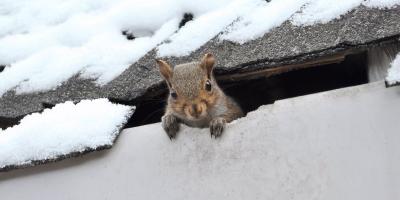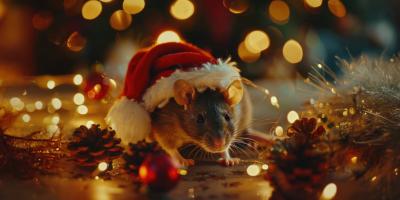Stink Bug vs. Western Conifer Seed Beetle: #Twinning

Everyone is familiar with those slow, lazy, smelly houseguests that invade your home every fall and won’t take the hint to get out until spring. No, not some distant cousins just “passing through” New England, we’re talking about stink bugs that overstay their welcome during the winter.
But just because you’re familiar with the pests doesn’t mean you know them as well as you think you do. That’s because there are actually two completely different species that people often call stink bugs — one original and one imposter.
Will the Real Stink Bug Please Stand Up?
Okay, maybe “imposter” is a bit too harsh of a word for this particular case of mistaken identity. At least the two species people refer to as “stink bugs” are both technically “bugs” (many people also mistakenly refer to all insects as “bugs”).
Regardless, the original, bona fide species that originated the name “stink bug” is what’s also known as the brown marmorated stink bug. The other little fella often mistakenly called a stink bug is the western conifer seed beetle and, if we’re honest, it’s a reasonable mistake to conflate the two.
They came, they saw, they “stinked.”
Brown marmorated stink bugs are native to New England, but western conifer seed beetles…not so much. Like smooth jazz and avocados, western conifer seed beetles hail from the US West Coast (hence the first part of their name), having established themselves in New England in the 1990s. They also get a bad rap — routinely mistaken for other insect species.
Aside from looking strikingly similar, the two species are alike in one big, important, stinky way. The western conifer seed bug will let off a defensive odor if you handle it — just like the brown marmorated stink bug. Squish either one, and you’ll get a smattering of stink.
But there’s one important reason why you might want to learn to tell the two apart, and it comes down to why they’re each considered pests.
Sometimes, a Pest is a Pest just for Pestering
Way back in 2010, Massachusetts was overwhelmed with a small, brown, freckled bug that many residents mistakenly feared was the brown marmorated stink bug. Why did they fear it? Because at that same time, the brown marmorated stink bug was wreaking havoc on fruit and vegetable crops in Maryland.
In other words, the western conifer seed beetle is a pest just because it’s annoying to have a bunch ambling around your house all winter long. Animals that create such a relatively benign problem are called “nuisance pests.”
That’s why it’s important to be able to tell the two species apart, at least for farmers and agriculture administrators. What’s important for you, however, is to know how to prevent them.
They’re Called ‘Fall Invaders’ for a Reason
Both species wind up in your home at the same time of year for the same reason — they’re among a cadre of pests known as “fall invaders” that will fit through whatever gaps or openings they can find to get in from the cold when the temperatures start plummeting in the fall.
Not all fall invaders, it should be noted, are quite as harmless. That’s why our Fall Invaders program works to keep them all out.
Enjoy a stink-free season, starting this fall — contact us today for a free consultation about the seasonal pest protection offered by our Fall Invader Program.



